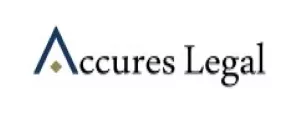Background
Each branch of knowledge has developed its specialized language so that people working in the same field can handle and understand things clearly and correctly. This specialized language is developed to simplify and substitute the repeated use of long technical sentences and explanations, thus enabling easy and clear communication. This applies to patent specification drafting as well. This article discusses and illustrates why and how a patent specification language is different from the general English language.
Why is the “Different” Language in Patent Specification?
In a patent specification, one would come across terms such as scope, independent claim, comprising of, composed of, consisting essentially of, embodiments or implementations, etc., and each such term has a specific meaning attached to it that is slightly different in context from the general usage. What makes it different is the usage of technical words combined with legal terminologies, thus acquiring the name “techno-legal” language.
For example, a person reading a patent specification for the first time may find the repetition of content with slight changes in many paragraphs. These so-called repetitions are called embodiments or implementations of the invention. This means that they are the preferred alternate multiple modalities in which the invention can be performed to achieve the desired results. These embodiments are essential to a patent specification to sufficiently support the broadly claimed subject matter of the invention.
While reading a patent specification, one may associate multiple words/phrases with their ordinary and customary meaning and therefore, may misunderstand the invention. To avoid the above scenario, the applicants can be their own lexicographers by especially defining the meanings of those words consistent with the scope of the invention.
In the above context, the usage of words “comprising”, “consisting of”, and “consisting essentially of”, though used as synonyms in plain language has specific meaning and importance in the claims section of the patent specification. The term “comprising” has the broadest interpretation that does not exclude additional, unrecited elements or method steps, thereby making it an open-ended term. The term “consisting of” excludes any element or method not specified in the patent claims. And the term “consisting essentially of” essentially limits the scope of the claims to the specified materials or steps or components to the extent to which any addition of something else does not alter the basic and novel characteristics of the claimed invention materially.
Example 1 – if there is a motorcycle claimed in a patent as “A motorcycle, comprising: frame, headlight, battery, a pair of wheels”, this does not mean that other than the above components, the claimed motorcycle cannot have an engine or side-view mirror or seat.
Example 2 – if there is a motorcycle claimed in a patent as “A motorcycle, consisting: frame, headlight, battery, a pair of wheels”, this means that the claimed motorcycle will have only the above-mentioned components as its different parts, therefore, excluding any element, step, or ingredient not specified in the claim.
Example 3 – if there is a medicinal composition claimed in a patent as “A therapeutic medicinal composition, consisting essentially of 2% A, 1% B, 0.8% C and 1.5% D”, and if there is disclosed in the specification or already known that any amount other than the above-mentioned percentages can produce undesirable results or change the basic and novel characteristics of the claimed medicine, then in this scenario, amount of A, B, C and D to be used is limited to the above percentages. If the basic and novel characteristics of the claimed medicine do not change by altering the above percentages, then “consisting essentially of” can be construed as equivalent to “comprising”.
When it comes to language, the patent agents/attorneys are required to be accurate as any mistake can adversely affect the application.
Poor drafting has always been a cause of the problem in acquiring patent grants. Thorough knowledge of technical terms, their appropriate usage in the right place, and describing the claims accurately while not limiting the claims too narrowly or making them broader are all essential points to be kept in mind while drafting.
From the perspective of an applicant, it is also important to understand that every thought that led to the development of the invention, every detail, or personal opinion on future research or goals regarding the invention that the applicant believes are important are not required to be included in the patent application and that patent agents try to keep the description fairly positive from a structural or mechanical standpoint covering only the essential points.
The content of this article is intended to provide a general guide to the subject matter. Specialist advice should be sought about your specific circumstances.
We operate a free-to-view policy, asking only that you register in order to read all of our content. Please login or register to view the rest of this article.



